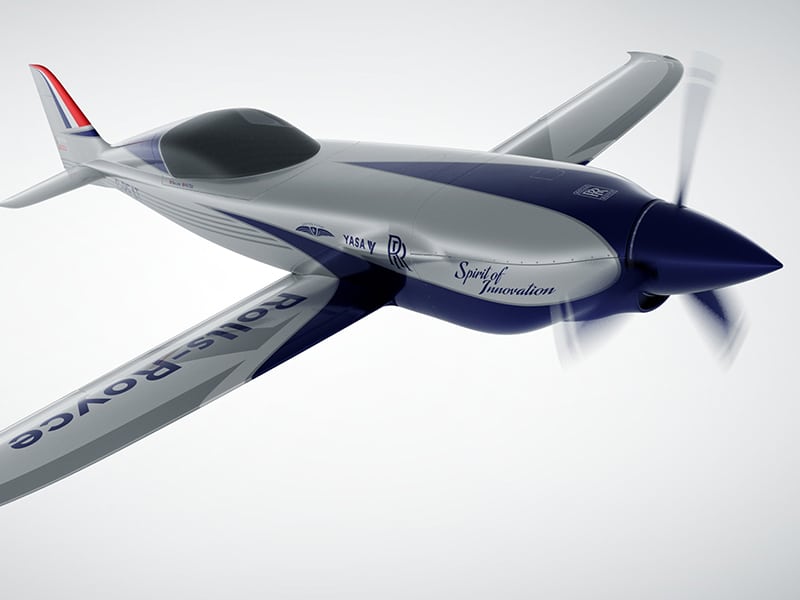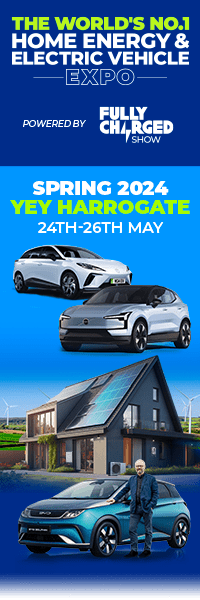
The idea of electric aircraft isn't pie in the sky
The human brain seems to have a gift for remembering the wrong things. Five years ago, I was lucky enough to take a flight in a 100% electric plane, and I’m sure my dominant memories should have been of the gleaming technology, the ingenuity of it all, and the joy of zooming around the sky free of carbon-tinged guilt. But they’re not. My memories are dominated by one moment: sailing through a steep-sided valley at a height of about 1000 metres as the motor switched off and the prop stopped turning. The sudden silence was jarring, broken only by a brief electrical whine as the prop folded itself down into the body of the aircraft, Wallace-and-Gromit style, and we became a glider. Of course, I’d known it was going to happen. But the pilot hadn’t thought to warn me just before he pressed the button and I’m still getting over the shock.
We were visiting a company called Pipistrel in Croatia, and this was their Taurus two-seater all-electric plane. Electric planes have a few challenges facing them, but the biggest is the difficulty of carrying sufficient stored energy on board to actually fly the plane for any significant distance. Pipistrel had come up with an elegant idea for a small leisure plane which side-stepped the problem. The super-light plane takes off from a normal runway using an electric motor, and once at altitude, it becomes a glider. All the battery has to do is to get it off the ground. It was a beautiful design, and great fun to be in, but it seemed to exemplify the limitations of electric flight. Physics doesn’t really let you scale the idea up, you’re always at the whim of the weather, and range anxiety is very very real. I left that airfield pretty skeptical about full-sized electric planes ever really taking off.
But that was five years ago. Physics hasn’t changed in that time, but maybe technology has. So when I heard about a lecture this week at Imperial College in London called “Electric aircraft propulsion: Volting into the air”, I thought I should go along and see whether it’s time to dial back my doubts. The speaker was Professor Ric Parker, a life-long plane fan who spent fifteen years as the Director of Research and Technology at Rolls Royce. Hopefully, his whole talk will be available online soon, but I’m just going to pick out the bits that really struck me. We’ve included links to some of the reports he cited at the bottom of this page, so you can dig around for yourselves if you’d like to know more.
The first thing is that the idea of electric aircraft isn’t pie in the sky. There’s an awesome map made by the consultancy company Roland Berger that shows all the companies working on this worldwide, and lets you explore what they’re doing. It’s here: [https://www.rolandberger.com/assets/london/map/index_updated.html]. There are well over a hundred, and the best thing about that map is that you can see pictures of the prototypes or artists impressions of what they’re trying to build. It’s great fun, because it looks like the results of a game where you have to create some sort of creature from a basic set of components. The wings and bodies are bulbous or elongated or curved in weird ways. They’ve got propellers stuck on it all sorts of places – at the front, a line of them along the front wing edge, a small army all over the plane body. Every possible combination seems to be in there, along with some more conventional-looking creations.
So here is the first lesson about potential aerial EVs. An all-electric propeller motor is immensely freeing for the designers. An electric car still has to fit on the road and two to four people want to sit inside it. But up in the sky, you don’t need to bother with fitting anywhere, so you can play with the shape as much as you like as long as it generates aerodynamic lift. It’s easy to have twenty small electric propellers instead of two big ones, something that is really fiddly using combustion engines. It’s also easy to tilt those propellers, so they point downwards for take-off and then horizontally when it’s time to move forward. Like the Taurus I flew in, you can also fold those propellers away fairly easily. Moveable propellers also brings us to vertical take-off, something that seems very common in these designs. And there’s a reason for that.
An electric plane has to carry enough stored energy to cover everything it needs until it lands. But every method for storing energy has mass, and the heavier it is, the more energy it takes to get off the ground. The ideal is as much energy as possible packed into as little mass as possible. Kerosene (current plane fuel) carries about 40 MJ/kg. But the theoretical limit for a Li-ion battery – the best physics and chemistry will ever let you do – is somewhere just less than 1 MJ/kg. This is a problem. For longer flights, you can’t carry enough batteries to get your batteries off the ground and to your destination, never mind any passengers as well. But for shorter flights, maybe you can, if you make everything else lighter. So a strikingly high proportion of electric plane development is in “air taxis”, or small planes for short hop flights. Uber is working on this [https://www.theguardian.com/travel/2019/jan/11/uber-partner-bell-reveals-design-for-flying-taxi-nexus-ces-vegas], and they’re far from the only ones. If you want to take off and land in a city (or anywhere without a significant amount of space dedicated to an airfield), vertical take-off is pretty much essential.
I have to confess that I’m not looking forward to skies filled with air taxis as well as drones and unmanned delivery vehicles. Fortunately, that’s not going to happen until someone has worked out a way to regulate it and to get all the aircraft to play nicely together, and that might keep the lawyers busy for a while.
But the strongest message I took away from this talk was about hybrid vehicles. For cars, hybrids were only ever really a transition stage – something to reassure consumers while demonstrating that the technology worked. In the air, it’s not going to be like that. For example, the reason for the size of current aircraft engines is take-off – they have to be able to supply a huge amount of power for that very short period, but they don’t need it for the rest of the flight. What if you had batteries that bumped up the power available just for take-off? Then your plane will still mostly run from kerosene-burning engines, but they’ll be smaller and more efficient. What if your plane had four engines, but one or two of them were purely electric and the rest burned fuel? You still reduce emissions in the air, but you also have a longer range. There are all sorts of things on planes that could be run from batteries, but generally haven’t been – pumps and compressors, starter engines and brakes. Boeing’s 787 Dreamliner was the first large plane to have all-electric systems, and there’s plenty of potential for that to become the norm. The equivalent of regen braking doesn’t really apply to planes in the middle of a flight, because propulsive energy is immediately lost to drag. But when coming into land and slowing down on a runway, the props could run backwards to re-charge an internal battery. All of this could make planes significantly more efficient, without a major leap forward in battery technology. Of course, there are still the issues about where the materials needed to make the batteries and electronics come from, but in principle, it’s possible. And if you’re really into forward-thinking, there are people talking about making the body of an aircraft from an electrically-functional composite, so that the body of the plane itself *is* the battery. I’m not holding my breath for that one, but it’s an awesome idea.
100% electric flights probably won’t be available to normal consumers for at least ten years, but after that, maybe city hoppers like the Zunum Aero [https://zunum.aero/] will be zooming around the skies. Hybrids might start to take over from conventional aircraft on longer flights. And the smallest people carriers will probably exist too, looking less like an eagle and more like a very complicated bee. So… it’s happening. Slowly. I’m still not convinced that 100% electric long-haul flights are anywhere on the horizon, but I am convinced that there are a lot of valuable battery-based improvements possible without ditching kerosene completely. The birds had better watch out, because the electric revolution is coming to the skies.
The talk Helen attended was “Electric aircraft propulsion: Volting into the air”[www.friendsofimperial.org.uk/FOIC-Index.php?pg=EventDetail&from=Past-Events&yr=18&ev=302], given by Professor Ric Parker. The event was organised by the Friends of Imperial College [www.friendsofimperial.org.uk], who are an independent self-financing charity which organises science lectures for the public and visits for members to research establishments at Imperial and elsewhere. They say that a recording of the lecture will be available on their website soon, and we’ll post a link to it when it appears.
Other resources, for the keen beans:
Roland Berger update on global electric aircraft developments, May 2018:
https://www.rolandberger.com/en/Point-of-View/Electric-propulsion-is-finally-on-the-map.html
Roland Berger 2017 report on developments in electric aircraft propulsion, including all sorts of stats and some really good graphics showing current and future developments: https://www.rolandberger.com/en/Publications/New-developments-in-aircraft-electrical-propulsion.html
Roland Berger report on passenger drones:
https://www.rolandberger.com/en/Publications/Passenger-drones-ready-for-take-off.html
The Taurus Electro: https://www.pipistrel-aircraft.com/aircraft/electric-flight/taurus-electro/





